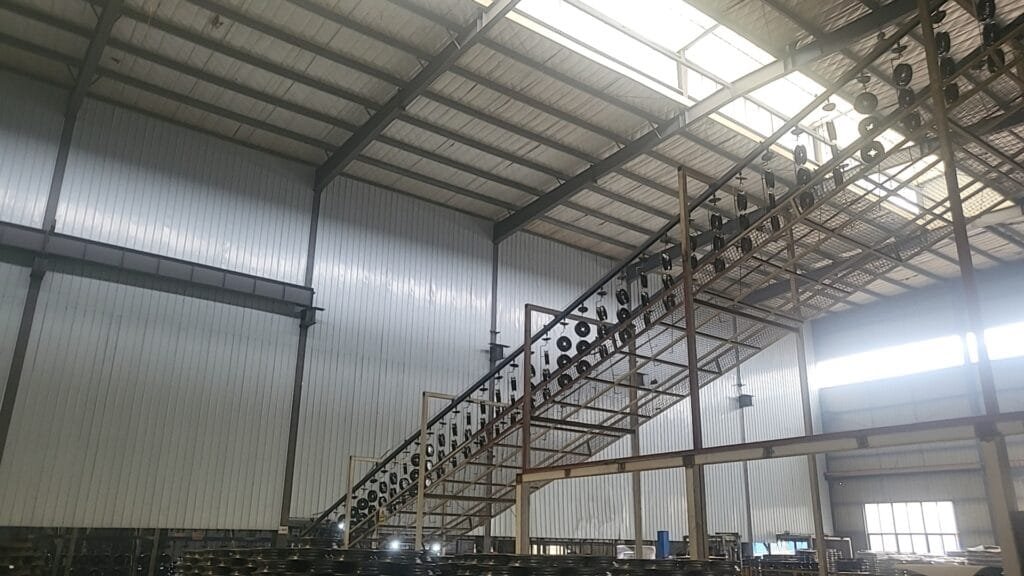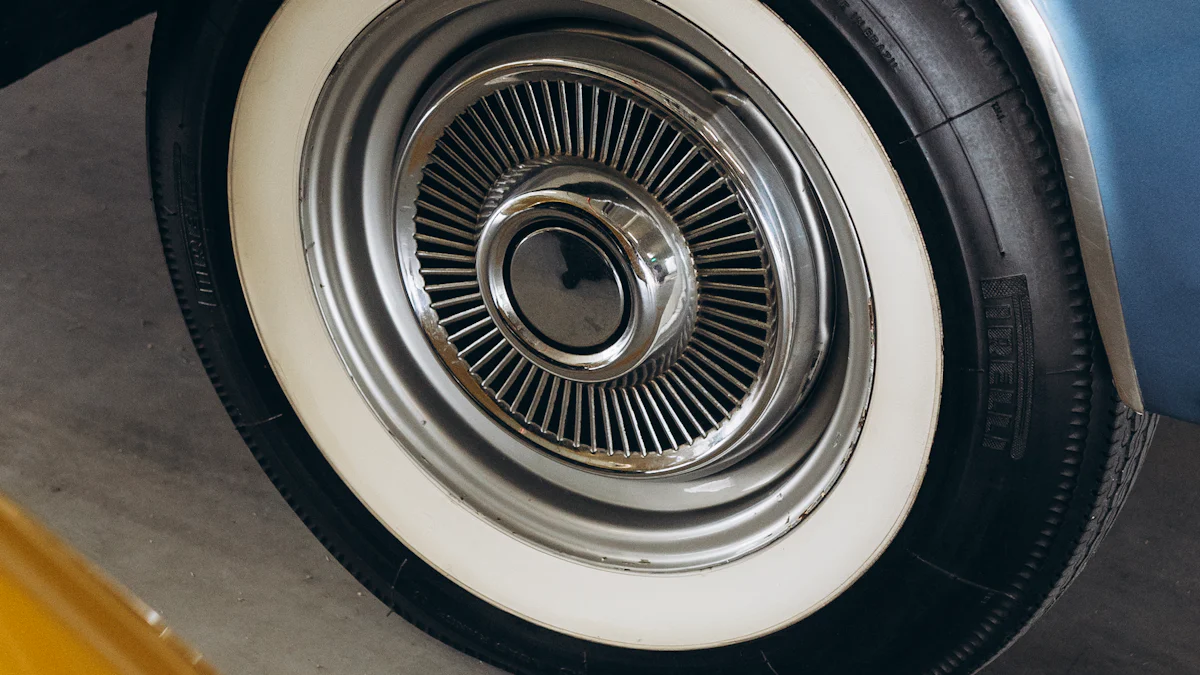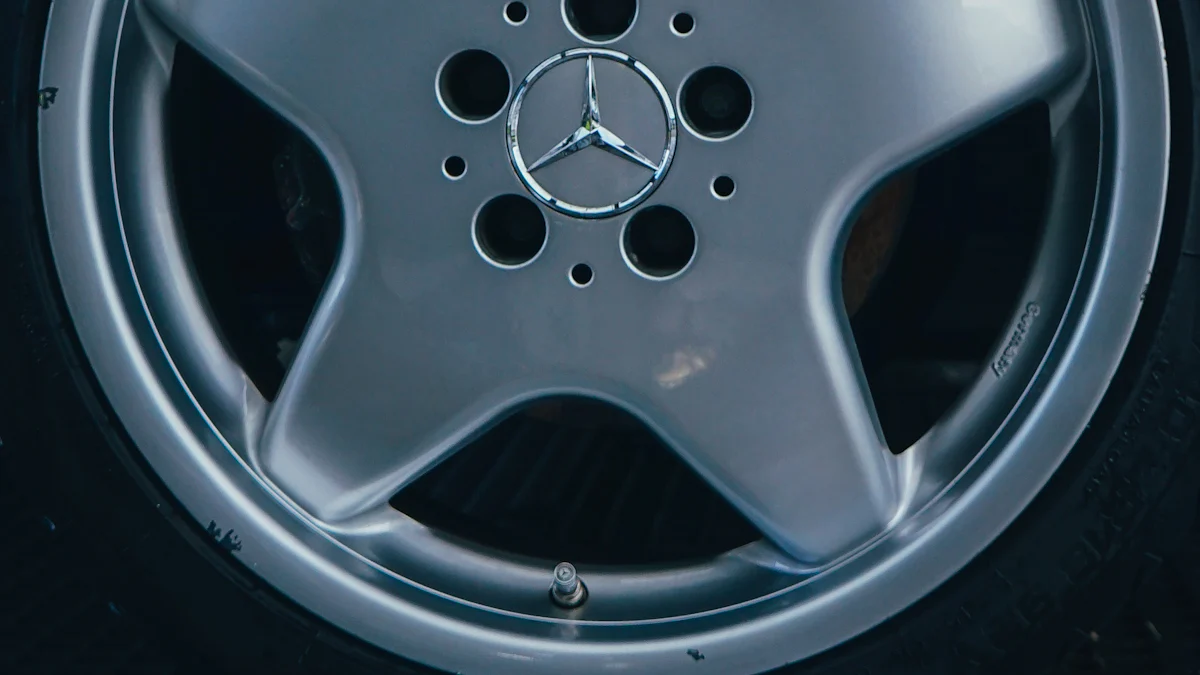
Car steel rims have played a transformative role in the evolution of automotive wheels. Their robust construction ensures exceptional durability, making them a reliable choice for vehicles enduring daily wear and tear. Steel rims withstand impacts and minor accidents better than many alternatives, reducing replacement costs and enhancing long-term affordability. Additionally, their cost-effective production has made them a standard feature in entry-level vehicles, keeping prices accessible for a broader audience. By combining durability with affordability, steel rims have significantly contributed to enhanced performance and the overall advancement of automotive technology.
The Early Days of Steel Wheels

Transition from Wooden and Wire Wheels
The history of wheels reveals a fascinating journey of innovation. Before the adoption of car steel rims, early automobiles relied on wooden spokes paired with solid rubber tires. This design, borrowed from horse-drawn carriages, was lightweight but lacked durability. As vehicles became faster and heavier, wooden wheels struggled to handle the increased stress. Wire wheels emerged as a solution, offering improved strength and flexibility. However, they required frequent maintenance and were prone to damage under harsh conditions.
The introduction of steel wheels marked a turning point in the history of wheels. Steel, as a material, provided unmatched strength and resilience compared to its predecessors. Unlike wooden or wire wheels, steel rims could endure the demands of early automobiles, which often traveled on unpaved and uneven roads. This transition not only enhanced performance but also paved the way for more reliable and affordable vehicles.
Advantages of Steel Wheels in Early Automobiles
Steel wheels quickly gained popularity due to their numerous advantages over earlier designs. These benefits included:
- Greater strength and durability, making them ideal for rough and uneven terrains.
- Resistance to bending or cracking upon impact, ensuring reliability in challenging conditions.
- Lower production costs, as steel was more affordable and easier to manufacture than other materials.
- Simplified repairs, which reduced maintenance expenses for vehicle owners.
These features made car steel rims a practical choice for early automobiles. They provided a balance of affordability and functionality, which was crucial during the early 20th century when the automotive industry was still in its infancy. By addressing the limitations of wooden and wire wheels, steel rims played a vital role in shaping the history of wheels and advancing automotive technology.
Technological Advancements in Car Steel Rim Manufacturing
Metallurgical Innovations
The evolution of steel rims owes much to advancements in metallurgy. Early steel rims relied on basic carbon steel, which provided strength but lacked flexibility. Over time, metallurgists developed high-strength low-alloy (HSLA) steels. These materials offered improved durability while reducing weight, which enhanced vehicle performance. The introduction of heat treatment processes further refined the mechanical properties of steel rims. Techniques like quenching and tempering increased hardness and resistance to wear. These innovations allowed manufacturers to produce rims capable of withstanding higher stress levels without compromising safety.
Modern metallurgical research focuses on sustainability. The use of recycled steel has become a priority, reducing the environmental impact of production. Additionally, the integration of advanced coatings protects rims from corrosion, extending their lifespan. These metallurgical advancements have ensured that steel rims remain a reliable component in automotive technology.
Manufacturing Process Improvements
The manufacturing of steel rims has seen significant progress in efficiency and precision. Advanced control of technological parameters during rolling, forging, and extrusion ensures the desired mechanical properties. Efficient monitoring of these processes reduces costs and enhances production quality. Non-conventional methods, such as powder metallurgical forging, shorten production cycles and conserve resources.
Automation has revolutionized steel rim production. Factories now employ robots for tasks like welding and painting, improving consistency and reducing human error. Artificial intelligence and machine learning are emerging as tools for optimizing plant operations and raw material usage. These technological advancements have made the production of stamped steel wheels more cost-effective and sustainable.
Design and Aesthetic Enhancements
Steel rims have evolved beyond functionality to include aesthetic appeal. Early designs focused solely on durability, but modern rims incorporate sleek and stylish patterns. Advances in stamping and forming techniques allow for intricate designs that enhance the visual appeal of vehicles. Customization options, such as different finishes and colors, cater to consumer preferences.
Manufacturers also prioritize aerodynamics in rim design. Streamlined shapes reduce air resistance, contributing to fuel efficiency. These design improvements demonstrate how steel rims balance practicality with modern automotive trends. By combining durability with aesthetics, they continue to play a vital role in the automotive industry.
The Shift from Steel Wheels to Modern Alternatives

The Rise of Alloy Wheels
Alloy wheels have emerged as a popular alternative to steel wheels in modern vehicles. Their lighter weight offers several advantages, including improved fuel efficiency and enhanced vehicle performance. By reducing unsprung weight, alloy wheels contribute to better handling and less wear on suspension systems. This makes them an attractive choice for drivers seeking a smoother and more responsive driving experience.
The design flexibility of alloy wheels has also played a significant role in their rise. Manufacturers can create intricate spoke patterns and offer a variety of finishes, allowing for greater customization. This level of personalization appeals to consumers who value aesthetics and want their vehicles to stand out. Additionally, alloy wheels resist corrosion, ensuring a longer lifespan compared to steel rims.
| Factor | Description |
|---|---|
| Lighter Weight | Alloy wheels reduce the overall weight of the vehicle, leading to better fuel economy and performance. |
| Better Vehicle Performance | Reduced unsprung weight improves vehicle dynamics and reduces wear on the suspension system. |
| Resistance to Corrosion | Alloy wheels are immune to rust, unlike steel wheels, enhancing their longevity and durability. |
These factors have made alloy wheels a preferred choice in the automotive industry, especially for passenger vehicles.
Decline of Steel Rims in Passenger Vehicles
The demand for lightweight materials has significantly influenced the decline of steel rims in passenger vehicles. Alloy wheels, with their performance benefits and aesthetic appeal, have become the standard in many modern cars. Consumers increasingly prioritize style and efficiency, which alloy wheels deliver more effectively than steel rims.
The shift toward electric vehicles has further reduced the market for steel rims. Electric vehicles require advanced materials to optimize weight and energy efficiency. Alloy wheels align with these requirements, making them a more suitable option. As a result, steel rims have seen a decline in popularity within the passenger vehicle segment.
Continued Use of Steel Wheels in Specific Applications
Despite their reduced presence in passenger vehicles, steel wheels remain essential in specific applications. Off-road vehicles, such as the Land Rover Defender and Jeep Wrangler, rely on steel wheels for their durability. These wheels can withstand rough conditions and are easier to repair compared to alloy wheels, which may crack under stress.
Steel wheels are also a practical choice for winter tire setups. Their resistance to damage from road salt and harsh weather conditions makes them ideal for seasonal use. Automotive enthusiasts appreciate their utilitarian benefits, including affordability and reliability. This ensures that steel wheels continue to serve a vital role in the automotive industry, particularly in challenging environments.
The Legacy and Future of Automotive Wheels
Historical Significance of Steel Wheels
Steel wheels hold a pivotal place in the evolution of automotive wheels. Their introduction in the 1920s, particularly steel-spoke wheels, revolutionized the industry by offering unmatched strength and reliability. This innovation replaced wooden spoked wheels, which had been a staple of early automobiles but lacked the durability needed for heavier and faster vehicles. By the 1930s and 1940s, advancements in metallurgy enabled the widespread adoption of stamped steel wheels. These wheels were not only stronger but also more cost-efficient to produce, making mass production of vehicles more feasible.
The transition from wooden to steel rims marked a significant milestone in the history of wheels. Steel rims became synonymous with robustness and affordability, allowing automakers to cater to a growing market. This shift played a crucial role in shaping the evolution of automotive technology, enabling the production of reliable and accessible vehicles for the masses.
Current Relevance in the Automotive Industry
Despite the rise of alternatives like alloy wheels, steel wheels remain relevant in the automotive industry. Their affordability makes them a preferred choice for entry-level vehicles, helping manufacturers keep costs low. Steel wheels also excel in durability, withstanding daily wear and tear better than many modern alternatives. This reliability translates to lower ownership costs for consumers, particularly in regions where road conditions are less than ideal.
Steel wheels also contribute to weight savings, which is increasingly important in the context of fuel efficiency. As the demand for fuel-efficient and electric vehicles grows, steel wheels continue to play a role in optimizing vehicle performance. Their practicality ensures they remain a staple in specific applications, such as commercial vehicles and winter tire setups.
Future Innovations and Sustainability in Steel Rim Technology
The future of steel rims lies in innovation and sustainability. Manufacturers are exploring advanced designs that reduce weight while maintaining strength. Companies like Maxion are leading the charge by developing lightweight steel wheels that lower carbon emissions. These innovations include the use of ultra-low CO2 steel and energy-efficient manufacturing processes, setting new benchmarks for sustainability in the industry.
Steel rims also offer a more sustainable alternative to aluminum wheels. Their production requires less energy, and the recycling process is simpler and less resource-intensive. As consumer preferences shift toward eco-friendly solutions, low-carbon steel rims with customizable designs are gaining traction. These advancements ensure that steel rims will continue to evolve, balancing tradition with modern demands for efficiency and sustainability.
Car steel rims have left an indelible mark on the history of wheels. Their introduction in the early 20th century replaced wooden spoked wheels, which could not meet the demands of modern vehicles. Steel rims offered unmatched strength and affordability, revolutionizing the automotive industry. This transition highlighted the need for durable materials as automobiles became faster and heavier.
Today, steel rims remain relevant in specific markets, such as commercial vehicles and off-road applications. Their durability and cost-effectiveness continue to make them a practical choice. As manufacturers explore lightweight designs and sustainable production methods, steel rims balance tradition with innovation. This evolution ensures their enduring role in the future of automotive technology.
FAQ
What makes steel rims more durable than alloy wheels?
Steel rims use high-strength materials that resist bending and cracking under stress. Their robust construction makes them ideal for rough terrains and heavy loads. Unlike alloy wheels, steel rims can absorb impacts better, ensuring long-term reliability in challenging conditions.
Why are steel rims still used in commercial vehicles?
Steel rims offer unmatched durability and cost-effectiveness, making them suitable for commercial vehicles. They withstand heavy loads and harsh environments, reducing maintenance costs. Their affordability also helps fleet operators manage expenses while ensuring reliable performance.
How do steel rims contribute to sustainability?
Steel rims use recycled materials, reducing environmental impact. Their production consumes less energy compared to alloy wheels. Additionally, steel rims are easier to recycle, making them an eco-friendly choice for manufacturers and consumers prioritizing sustainability.
Are steel rims customizable for modern vehicles?
Yes, steel rims now feature advanced designs and finishes. Manufacturers offer options like sleek patterns, aerodynamic shapes, and various colors. These enhancements allow steel rims to meet both functional and aesthetic demands of modern vehicles.
What advancements are expected in steel rim technology?
Future innovations focus on lightweight designs and sustainable production. Manufacturers are exploring ultra-low CO2 steel and energy-efficient processes. These advancements aim to reduce weight, improve performance, and align with global sustainability goals, ensuring steel rims remain relevant in the automotive industry.
- Posted In:General






